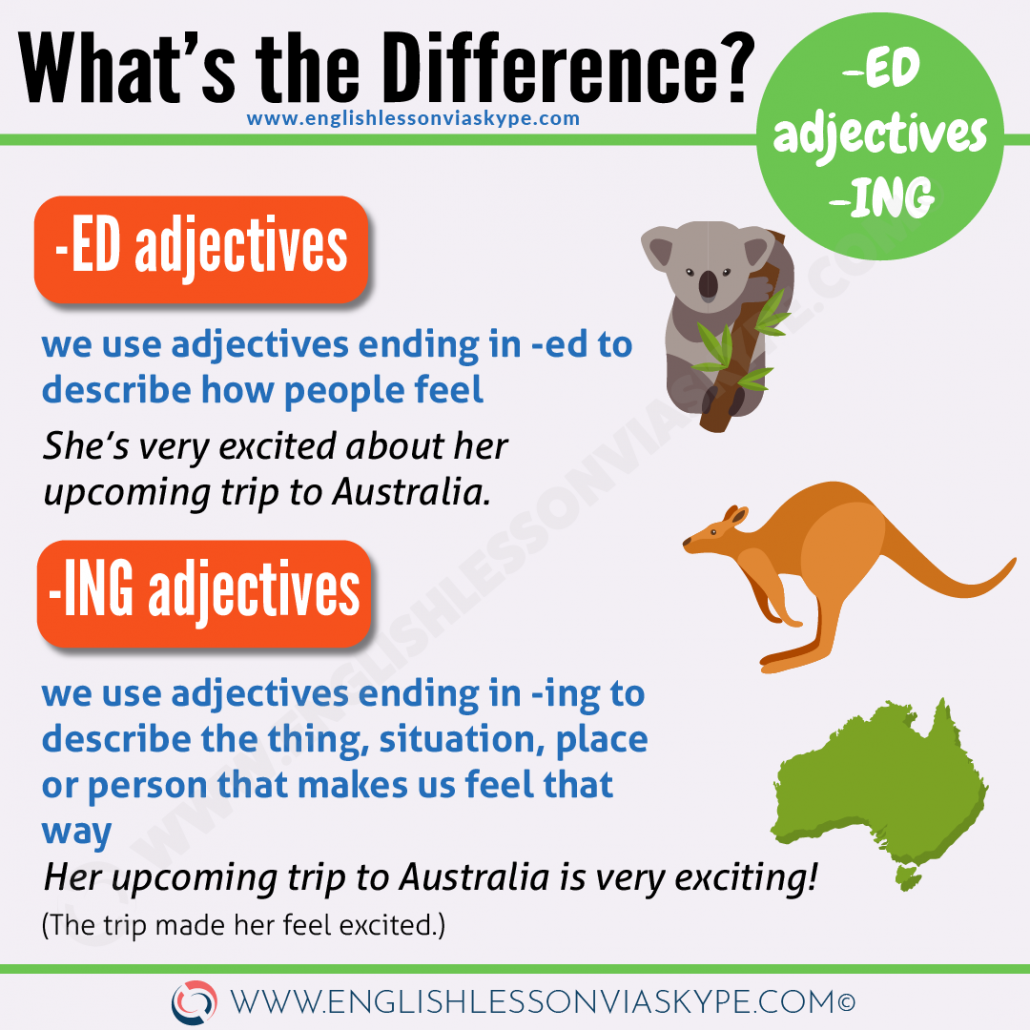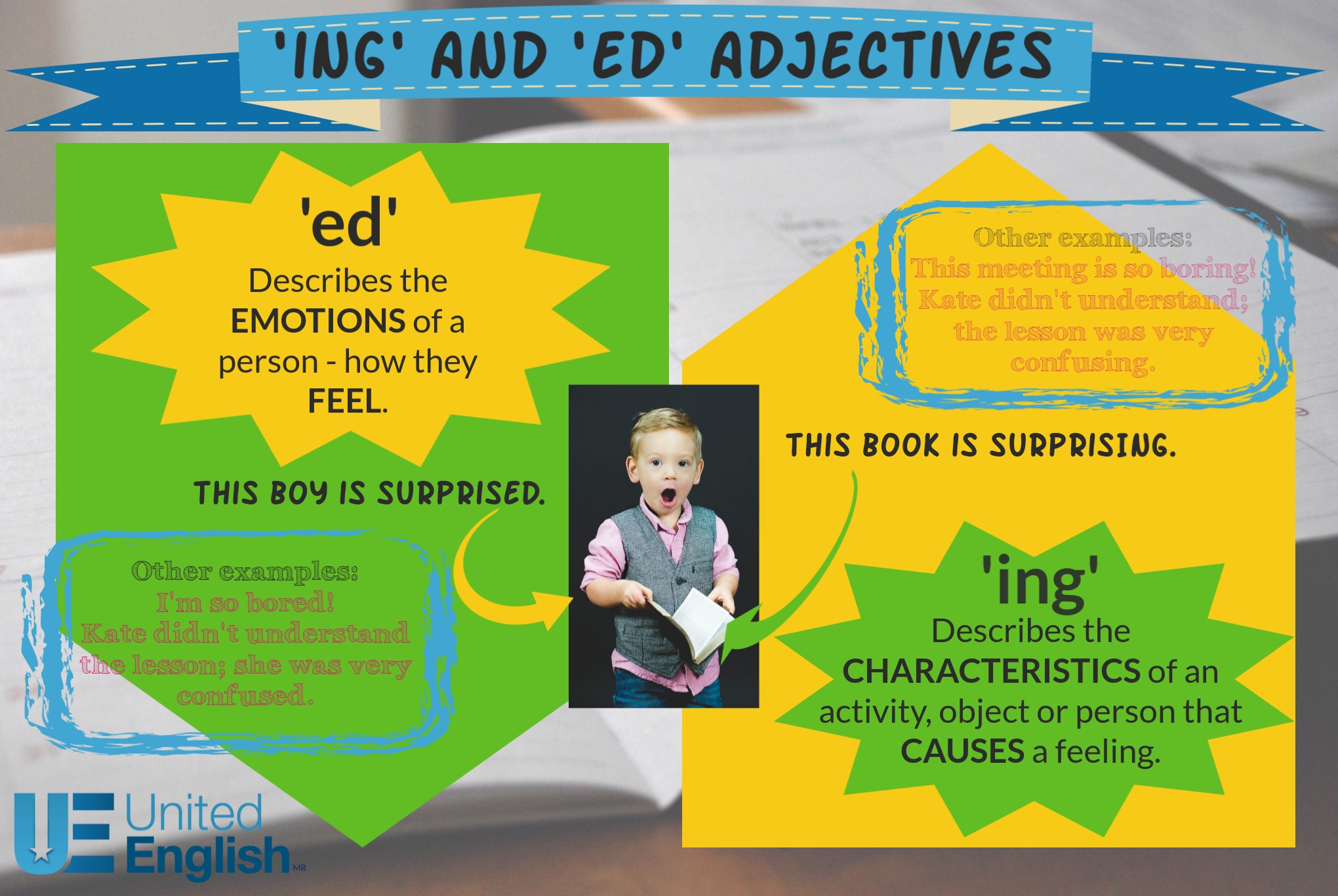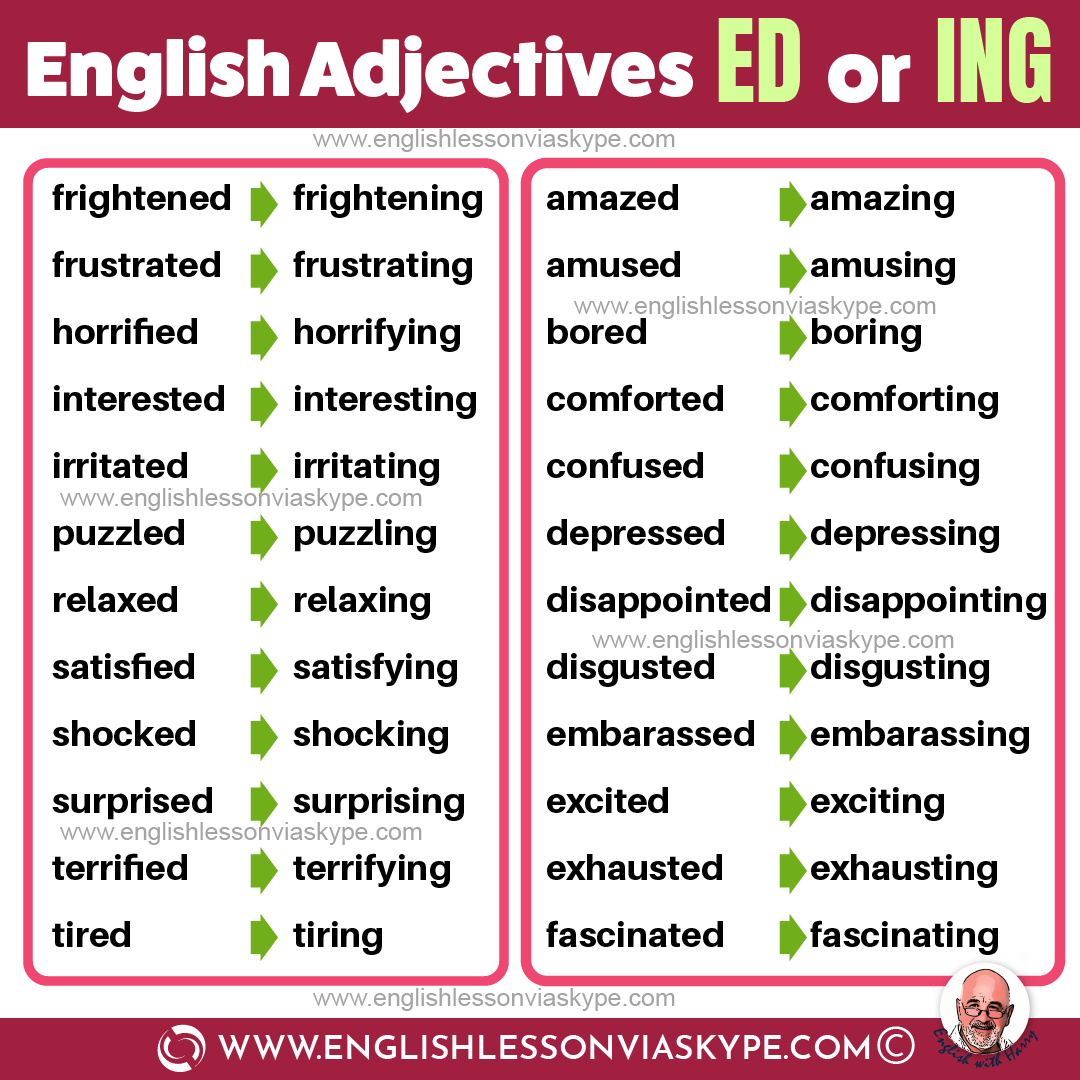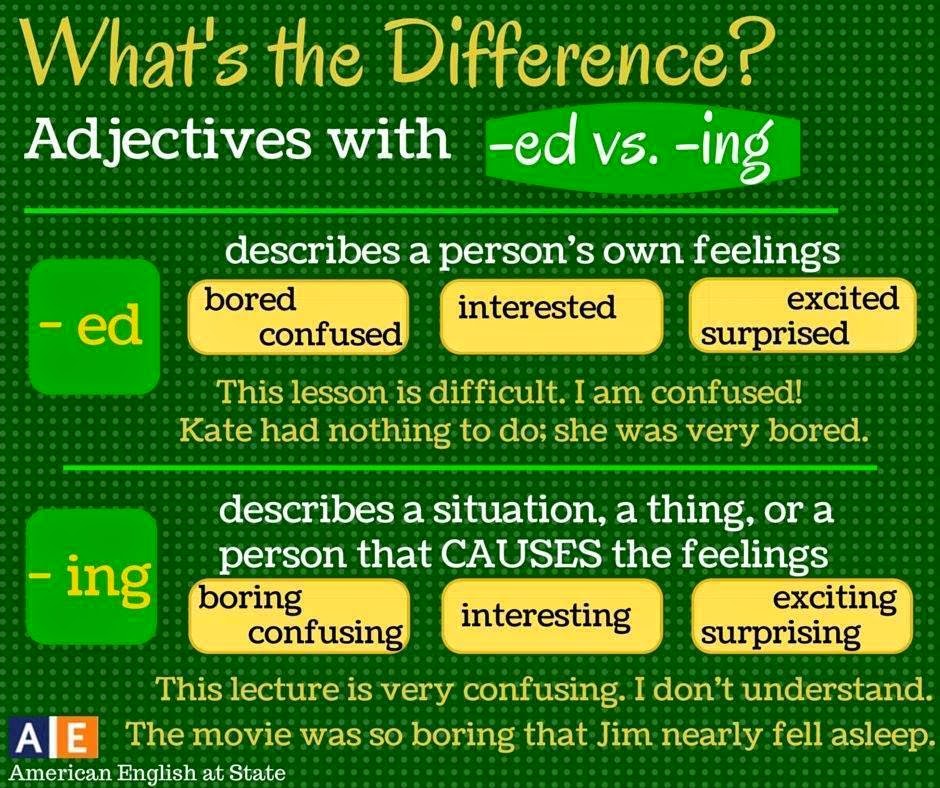
Particles as adjectives ending ing and ed online presentation
Amanda N August 21, 2023. Many English adjectives are formed with a verb plus an -ed or -ing ending. Some common examples of -ed and -ing adjectives are: Excited/exciting. Interested/interesting. Bored/boring. Tired/tiring. Surprised/surprising. We use these kinds of adjectives to talk about feelings and emotions, and the things that cause.

Adjectives with Ed and Ing Endings (Test)
Forming '-ing' and '-ed' adjectives. Many adjectives are created by taking a verb and then adding -ing or -ed: From the verb interest, we get the adjectives interesting and interested. From the verb surprise, we get the adjectives surprising and surprised.-ing adjectives. If something interests you, it is interesting.

List of Words Ending in ING and ED in English ESLBUZZ
Adjectives that end in - ing describe an effect or characteristic; i.e., they describe the thing or person that causes a feeling or emotion. Examples: Adam thinks the history teacher is boring. = the history teacher causes boredom. Natasha likes history. She thinks it is very interesting. Confusing the -ed and -ing endings can completely change.

Adjectives Ending in ED and ING Useful List & Great Examples
List of Adjectives ending in -ED and -ING. There is quite a long list of adjectives ending in -ED and -ING in English, and most of them are based on a verb that can be changed into an adjective by adding either -ED or -ING. Some of the more common ones include: Alarmed - Alarming. Aggravated - Aggravating.

Adjectives ending in ed, ing
As the page says, the -ing form has a number of uses and you have two different uses of the -ing form in your examples: 1) Weighing too little can contribute. > In this sentence, 'weighing' is the subject. This is the -ing form as a noun, sometimes termed the gerund. 2) moisturising cream > Here, the -ing form used as an adjective.

How to use English adjectives ending in ED and ING English with Harry
My name is Shane and by the end of this video, you will know how to use adjectives that end with ED and adjectives that end with ING. A lot of adjectives are like this. They have two forms. One ends with ING and the other ends with ED. Okay let's look at ED adjectives first and make sure you watch until the end of the video because there will.

ED/ ING ADJECTIVES ONLINE GAMES
garden → gardening. While -ed can put a verb in the past tense. jump → jumped. Back to top. Activity 1. Use the following words to fill in the gaps in the sentences below. The first one has.

ed / ing Adjectives TEFL Lessons ESL worksheets
i) Use (-ed adjective): - to describe how the person feel. e.g. The children are excited about the class party. (the children feel excited) ii) Use (-ing adjective): - to describe the person or thing that cause the feeling. e.g. What an exciting day! (the day is exciting) Difference between '-ed' & '-ing' Adjectives - How to use + Example.

ADJECTIVES ENDING IN ED OR ING ge… English ESL worksheets pdf & doc
Verb + ed is the past participle. When this form is used as an adjective, it is "passive.". Whatever or whomever is described has something done to it. Therefore, a person who can't find his or her keys begins to worry, and the missing keys make the person worried. In the same way, a many choices or problems can complicate a situation, or.

ed and ing endings worksheets
Adjectives ending in -ed or -ing.-ed: excited, interested, bored, annoyed, surprised.-ing: exciting, interesting, boring, annoying, surprising. The words above are a few of the adjectives that end in -ed or -ing.Their meaning can sometimes be confusing. Adjectives ending in -ed show what has happened to a person or thing. He was surprised by the result of his test.

List of Words Ending in ING and ED in English ESLBUZZ
'ED' Adjectives 'ING' Adjectives; Feeling: Describing: Use the 'ed' form of an adjective when you are describing how people feel. Use the 'ing' form of adjectives when you are describing things and situations. Usually 'ed' adjectives use I, he, she, they, we, you, and verbs like look, feel, in the sentence.

How to use English adjectives ending in ED and ING English with Harry
Grammar quizzes: Practise your English grammar with free quizzes from Cambridge Dictionary that test your understanding of different grammar topics.

ed y ing — La Diferencia — English Reservoir
We can use the present and past participles of verbs that describe an effect that is made on something as adjectives. We use the present participle (ending with "-ing") as an adjective to describe how the subject causes the effect. We use the past participle (ending with "-ed") as an adjective to describe how the subject experiences the effect.

Adjective Ed or Ing Rules Linguistics Grammar
Grammar test 1: Adjectives ending in '-ed' and '-ing' Read the explanation to learn more. Grammar explanation. Adjectives that end in -ed (e.g. bored, interested) and adjectives that end in -ing (e.g. boring, interesting) are often confused.-ed adjectives. Adjectives that end in -ed generally describe emotions - they tell us how people feel.

Adjectives Ending With ed and ing English Study Here
Adjectives - ED vs ING Endings. In English, verbs can become adjectives. Some of these adjectives can be confusing because they come in two forms. One adjective can end in -ed and another adjective can end in-ing. The way we use each form is actually quite simple. Let's take a look. If a someone (the recipient) feels the action, we use -ed.

Click on THE DIFFERENCE OF ADJECTIVES WITH ED OR ING
The Breakdown: -ing vs. -ed. If we take a look at the English rule book, we'll find that adjectives that end with -ed are used to describe feelings (or how a person feels) and emotions.Consequently, because only people (and some animals) can actually have feelings, -ed adjectives cannot be used to describe an object or situation, for example: